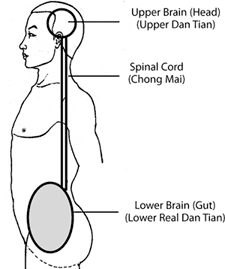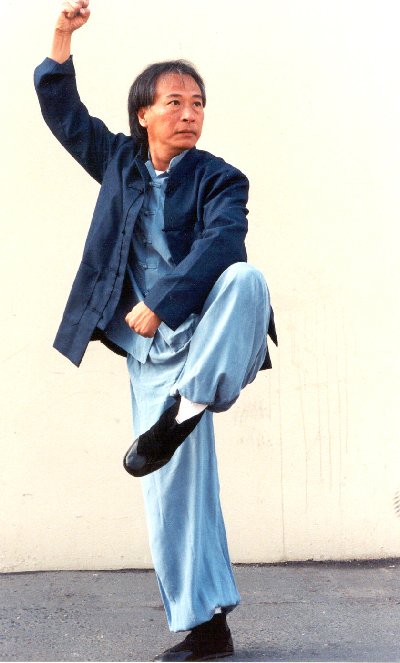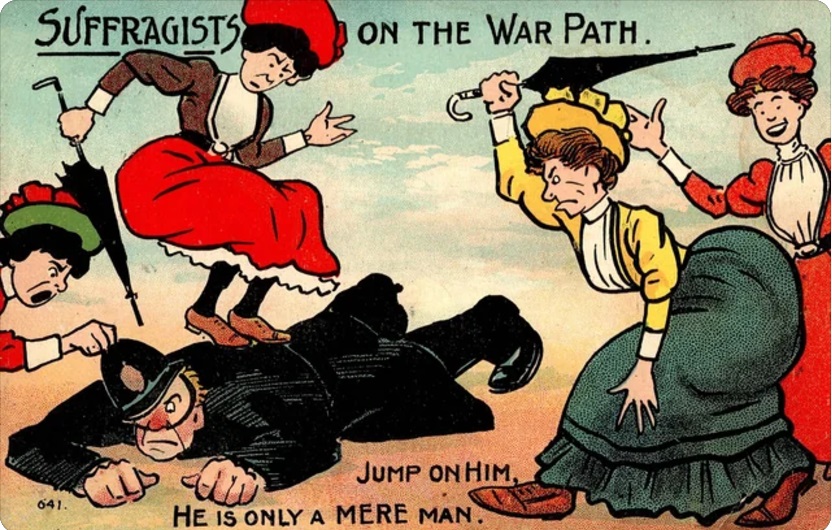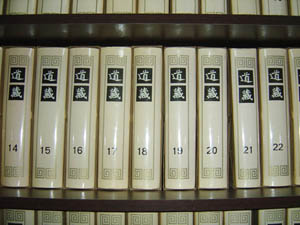Orthodoxy vs. Reform
/Orthodox thinkers generally regard the received tradition as so vast and rich in its depth that with dedication and perseverance the full range of knowledge from the past can be revealed.Â
Reform thinkers tend to view tradition as a source, but as a broken source. They see inspiration and knowledge from the past as either lost, obscured or inadequate for the current era.
People often make the mistake of thinking that orthodox thinkers are inflexible, but that is not true. They simply take traditional sources as the guide and measure of change and innovation. It is clear from Adam Hsu's book that he is an orthodox thinker. He is a creative innovator who sees orthodoxy (or orthopraxy if you prefer) as the source. He tells us that because most people do not have time for traditional gongfu we should find ways to accommodate them so that the arts will continue to have broad appeal. However, the heart of gongfu is in preserving and passing on what our teachers' practiced. Through our practice of tradition we have a direct link to the past.
 Reform thinkers run the risk of being shallow in their perspective. They tend to oscillate between lofty goals and pragmatic dogma, so they are easily sidetracked. Still, if the reform thinker is correct in his assessment that traditional lineages are a broken source of knowledge, then he is also correct in seeking to rediscover the original source of inspiration outside of lineage transmissions.Â
Reform thinkers run the risk of being shallow in their perspective. They tend to oscillate between lofty goals and pragmatic dogma, so they are easily sidetracked. Still, if the reform thinker is correct in his assessment that traditional lineages are a broken source of knowledge, then he is also correct in seeking to rediscover the original source of inspiration outside of lineage transmissions. While I was studying 3+ hours everyday with George Xu in my twenties, he was constantly seeking to unravel the mysteries of a legendary past while simultaneously looking to improve on the practices of his teachers. He was convinced that his teachers had not just hidden information out of a misplaced obsession with secrecy, but were actually transmitting errors because they were cut off from the sources of inspiration.
I'm an orthodox thinker by nature, given a choice, I'll usually choose depth and discipline--accepting that the results are somewhere on a distant horizon. But those years of listening to George Xu took their toll on me. It occurred to me that there must have existed at one time a milieu which was capable of producing the internal martial arts, and it was pretty clear that neither my teacher nor his teachers had experienced such a milieu. This insight slowly lead me away from George Xu because the questions he asked tended to keep him focusing on the simple and absurdly pragmatic: Is it good for fighting?
 Of course George Xu was/is aware of the pitfall of shallowness; given a choice between two methods of training which have the potential to produce comparable results, he would invariably choose the one likely to be better for one's health.
Of course George Xu was/is aware of the pitfall of shallowness; given a choice between two methods of training which have the potential to produce comparable results, he would invariably choose the one likely to be better for one's health.George Xu now claims to have corrected the major errors of his teachers through his own experiments. His writings are difficult to understand, as literature they are more rant than poetry or prose (you may find yourself trying to translate them back into Chinese). Yet, I find them brilliant and compelling.Â
Still, he has not rediscovered or recreated that mileu of the past which inspired these arts. He has more or less solved a puzzle, found a mathematical proof. My interest still lays in that original mileu. In the end I reject both of these teachers nostalgia for the distant past.  I hold to the notion that the complete source of inspiration is available to us right now, contingent only on us letting go of aggression. (I know, it sounds weak right?)
While we need not draw battle lines between orthodoxy and reform, ensconced as we are in traditional practices, we must walk a path, consciously or unconsciously, which privileges one of these two views.

 The book is an enjoyable collection of essays, and many others have reviewed it in the two years since it has been out. Adam Hsu and George Xu were/are friends so some of his students came to visit our class and occasionally someone would switch teachers. Adam Hsu himself would sometimes stop by and the Shifu's would practice tongue fu. Adam Hsu's movement was like his voice, soft, lively and clear. His voice as I remember it comes through in his writing. I also had regular opportunities to watch him teach and watch his dedicated students practice because for years his outdoor weekend class was about a block from the tiny room I rented during that phase of my life.
The book is an enjoyable collection of essays, and many others have reviewed it in the two years since it has been out. Adam Hsu and George Xu were/are friends so some of his students came to visit our class and occasionally someone would switch teachers. Adam Hsu himself would sometimes stop by and the Shifu's would practice tongue fu. Adam Hsu's movement was like his voice, soft, lively and clear. His voice as I remember it comes through in his writing. I also had regular opportunities to watch him teach and watch his dedicated students practice because for years his outdoor weekend class was about a block from the tiny room I rented during that phase of my life. Going back into pre-Han (200 BCE) history, it is problematic to used terms like Daoist ritual, Chinese, or even the state. Historians sometimes use words like fangshi or ritual expert to designate the priests or leaders of these rituals if they were not performed by the heads of state themselves.
Going back into pre-Han (200 BCE) history, it is problematic to used terms like Daoist ritual, Chinese, or even the state. Historians sometimes use words like fangshi or ritual expert to designate the priests or leaders of these rituals if they were not performed by the heads of state themselves. Many scholars believe that the Daodejing (~300BCE) was originally written for kings and royal families, but by the time
Many scholars believe that the Daodejing (~300BCE) was originally written for kings and royal families, but by the time  So the dantian is the place where the inner world merges with the outer world. A still place prepared for ritual. A ritual in which the chaos of the cosmos is danced into the dantian. A ritual in which the chaos of our total inner/out experience is brought into or onto a completely stable, mile square, platform of packed earth.
So the dantian is the place where the inner world merges with the outer world. A still place prepared for ritual. A ritual in which the chaos of the cosmos is danced into the dantian. A ritual in which the chaos of our total inner/out experience is brought into or onto a completely stable, mile square, platform of packed earth. To practice any style of Chinese martial arts one must align with the Six Harmonies.
To practice any style of Chinese martial arts one must align with the Six Harmonies. e not static, they are not held. The postures must have this alignment in motion, constantly. So if you think of a particular posture, say for instance Single Whip in Wu Style Taijiquan, the alignment must be felt not just in the posture but while entering it and while leaving it.
e not static, they are not held. The postures must have this alignment in motion, constantly. So if you think of a particular posture, say for instance Single Whip in Wu Style Taijiquan, the alignment must be felt not just in the posture but while entering it and while leaving it.
 My great grandparents were suffragettes in New York. My grandmother and her brothers and sisters grew up in a sexually liberated environment. In fact, my grandmother was an advocate for anatomically correct sex education in the schools-- and she occasionally bragged about sex orgies in the 1920's.
My great grandparents were suffragettes in New York. My grandmother and her brothers and sisters grew up in a sexually liberated environment. In fact, my grandmother was an advocate for anatomically correct sex education in the schools-- and she occasionally bragged about sex orgies in the 1920's. Just to pile it on, he also started the first Sex Information hot-line, the Yes Book(s) or Sex (he is featured in the one on masturbation), and helped run C.O.Y.O.T.E. (Come Off Your Old Tired Ethics) also known as the prostitutes union. I could go on.
Just to pile it on, he also started the first Sex Information hot-line, the Yes Book(s) or Sex (he is featured in the one on masturbation), and helped run C.O.Y.O.T.E. (Come Off Your Old Tired Ethics) also known as the prostitutes union. I could go on. Sexual liberation has positive psychological and physiological effects. However, if you are having a lot of sex you are going to need extra qi in the form of food, more rest and more sleep. Otherwise you'll become deficient. [In Chinese medicine deficient is a diagnosis which is sub-medical (because all you need to fix it is food, sleep and rest) but which is a contributor to many medical problems.]
Sexual liberation has positive psychological and physiological effects. However, if you are having a lot of sex you are going to need extra qi in the form of food, more rest and more sleep. Otherwise you'll become deficient. [In Chinese medicine deficient is a diagnosis which is sub-medical (because all you need to fix it is food, sleep and rest) but which is a contributor to many medical problems.]


